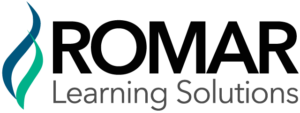
Have you ever sat in a training program and thought, “Wow! This is a huge waste of my time?”
Unfortunately, training programs often fail to provide anything new. Or they try to cram too much into too short a time period. Or they might be nothing more than a PowerPoint slide show.
Effective learning is about not only transferring information to learners but also ensuring that learners are able to apply the knowledge. In the busy business atmosphere, people don’t have time for a death-by-PowerPoint lecture that has no application in their world.
The following key principles will ensure that training you create has a meaningful impact:
Tell learners why they are learning something. We often assume that learners know why they are going through the training. The overarching reason for the training may be knowledge, but if you tell learners up front what they are specifically going to get from the learning, they are more likely to stay engaged.
Ensure that you build upon the life experiences of the learners. Self-directed learning places the responsibility for assimilating and integrating the discussed material onto the learner. You can apply self-directed learning by setting objectives and implementing small group exercises, case studies, and games.
Engage through effective questions. Adults come to a training program with experiences, skills, and knowledge—build upon those. By incorporating what learners already know, you are more likely to keep them interested, and they are more likely to sustain the learning.
Create highly interactive training that incorporates a hands-on problem-solving approach. Boring PowerPoint lectures are a waste of time and resources. You should change your facilitation method every 9 minutes and include activities, games, challenges, and discussions. Some lecture is necessary, but only a few minutes. Just because learners saw a slide doesn’t necessarily mean they learned anything.
Build in application activities related to the new knowledge and/or skills throughout the training. Teaching a small segment of content and then having learners complete an application activity related to that content is more effective than waiting until the end of the workshop for them to apply all the content. A well-designed program builds from one concept to the next, with the learner continually working with the new concepts throughout the session.
Employ a takeaway tool. A “Key Takeaway” section allows learners to determine how they will use the learned information back on the job. Learners should complete their key takeaway section at the close of each day of a session and at the conclusion of the session.
Using these principles will help ensure that your training is not only more effective but also more efficient. Good adult learning principles also help engage learners and increase their motivation to master the new skill, knowledge, or behavior.




